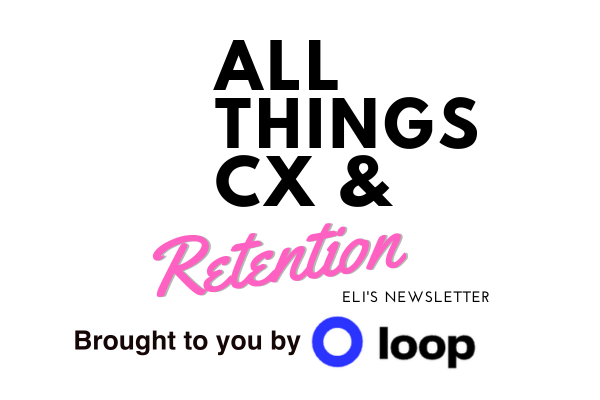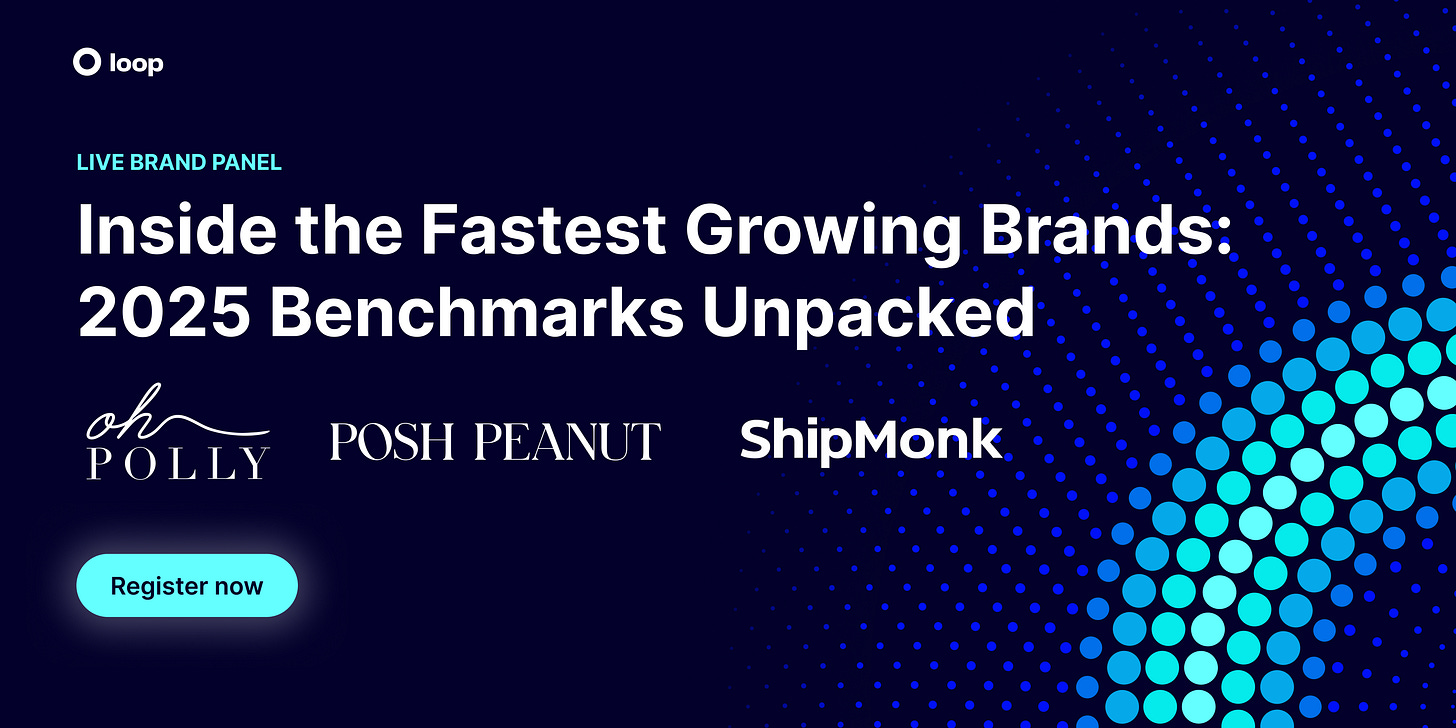Why 9-figure brands aren't built overnight
What every $100M founder learned before scaling.
Hi Team,
Last week, I made it out to the Hamptons for Camp Commerce. First time out there, and I was kind of hoping it’d be mid and overrated.
Very sad to report: it was stunning. I’ll now be left in New Jersey thinking about it for the rest of 2025.
At the event, I met some humble legends, and a good dose of cocky weirdos, like most ecom events (sorry.)
But something else has been on my mind since then. This time of year always brings a weird energy. The Q4 push begins. Everyone’s locking in their BFCM strategy. And at the same time, LinkedIn fills up with explosive growth posts.
This brand went from 0 to 9 figures in 18 months.
That brand just raised $45 million at a $500m valuation.
This founder built a $100M business while training for a marathon, raising twins, and casually posting banger tweets before breakfast.
It starts to feel like there’s a race happening that you didn’t sign up for. A race you’re somehow already losing.
But once you look behind the curtain, the story usually shifts.
Most of these “overnight successes” took ten years. And the people who built them weren’t guessing. They were drawing from experience they’d already earned.
That’s what I want to talk about this week. What you don’t see in the highlight reel. Why the best founders are rarely first-timers. And why you should probably give yourself a little more grace. Because this whole thing, this business, this life, never looks like what’s shown on the surface.
Let’s dive in.
Benchmarks meet strategy: Live look inside the fastest growing brands
What sets the fastest-growing eCommerce brands apart? The data is in, and it’s a must-see if you’re busy gearing up for peak season.
On September 9th, get an exclusive first look at Loop’s most data-packed Benchmark Report ever, featuring a live brand panel with Oh Polly and Posh Peanut as they share the strategies and tips fueling their success heading into the holidays.
Here’s what you can expect:
Benchmark your own performance: First-look at the most compelling post-purchase benchmarks of 2025
Get actionable insights: Understand what’s moving the needle ahead of the holiday rush
Learn from the best: Real-world tactics from brands protecting margins and driving sustainable growth
Ready to join the fastest-growing brands? Don’t wait – your competitive advantage starts here.
Pattern Recognition Beats Guesswork
The most common thread in the brands that win isn’t luck.
It’s that the founder already knew what to look for. Not always because they were smarter. Because they had done something quite similar before, or because they are the Serena Williams of the space they are building in.
Peter Rahal, who built RXBar in his kitchen and sold it for a reported $600M, didn’t just luck into his next venture.
When he jumped back in with David, it went from zero to nine figures fast. But he knew the space inside out, from gym culture to wholesale markup to packaging psychology, and is a killer marketer.
Same story with Grüns. Their founder had already spent years on the boards of top-tier DTC brands. He saw how the sausage was made. What actually moved retention and LTV. How product margin could kill a business before marketing ever had a chance.
So when he launched Grüns, he wasn’t testing ideas. He was applying them to a massive TAM. Great convo about that here.
And then you have OLIPOP.
Before OLIPOP, there was Obi. A beautifully designed probiotic kefir soda that didn’t quite hit as hard as OLIPOP. The founders learned everything they could from that run: flavor fatigue, the gap between function and taste, why certain words repel rather than convert, and how distribution strategy can make or break a beverage.
OLIPOP was the second draft.
At Jones Road, the story is even more straightforward. Bobbi Brown had already spent 25 years inside the beauty industry. She knew the consumer, the retailer, the influencer, the chemist.
She wasn’t running a playbook. She was the playbook.
Jones Road didn’t start with an MVP. It started with an insight that had been developed for decades.
These brands didn’t stumble into success. They were built by people who had already lived through failure, already developed taste, already seen the movie from the inside.
The Most Valuable Thing Might Be Time
You don’t need to be the first to market. You need to be the one who sees the market clearly.
Which is why I don’t think “taking your time” is always a liability. While hustle culture doesn’t miss an opportunity to tell you to move fast, life is longer than most like to imagine.
The more cycles you run, the more product launches, teams, fires, and near misses, the better you get at understanding what actually matters.
You start to spot patterns. You move faster, but not recklessly.
You get tighter with your cash. More confident in your voice. Less shaken by the inevitable dip.
That’s the stuff that compounds. Wisdom, learning how to make the right decisions.
If you’re in the middle of it right now, somewhere between first idea and second pivot, or second idea and first real traction, I hope this hits.
You’re building the exact experience that makes your “overnight success” story believable later.
And as someone who stood shoulder-to-shoulder near so many of these sensational “overnight success” companies, I hope it’s reassuring when I tell you, they are all still learning on the job.
Ryan Said It Better Than I Could
This post from Ryan Rouse at MALK hit hard when I saw it this week.
“Everyone thinks they’re behind schedule.
32 and no VP title yet. 35 without a successful exit. 40 and still figuring shit out.Meanwhile, I’m 46.
Factor sold for $277M but didn’t get the payday everyone assumes. Scaled HighKey to $60M+ in 3 years, then watched it fail to sell. Now running MALK at nearly 9 figures.
And some mornings I still wonder if I’m doing this right.”
The whole thing is worth reading. He talks about the invisible clocks we put on ourselves.
The way we compare our slow, messy Tuesday to someone else’s headline moment.
And how the ones who win long term are rarely the ones who popped early.
They’re the ones who just kept showing up. Year after year. Learning. Building. Still getting punched in the face by problems they’ve never seen before.
There’s something freeing about hearing that from someone running a nearly nine-figure business.
If You’re in the Middle, You’re in the Right Place
I’ve seen too many smart, talented founders burn themselves out trying to match someone else’s pace.
I’ve also seen people quietly work for ten years on other brands, finally launch their own, and come out of the gate with clarity and force.
Your first job in CX? That’s a rep.
Your failed side project? Another rep.
Your current role? Still a rep.
This is what builds the intuition later. When to hire. What to say in an ad. Which SKU to kill. None of it is obvious the first time around.
But once you’ve done it a few times, the noise gets quieter.
If you’re feeling behind, you’re not.
You’re just in the part that won’t make the LinkedIn post.
So keep going.
The reps count.
They always do.
So, be kind to yourself.
Sending lots of love your way,
- Eli
That’s it for this week!
Any topics you'd like to see me cover in the future?
Just shoot me a DM or an email!
P.S. If you want to figure out how to get your brand to rank high in LLMs and show up in ChatGPT, Gemini, and more… check this out.








This reminds me of Malcolm Gladwell - experts make pretty accurate and reliable decisions given limited information because years of bulding expertise elevates intuition